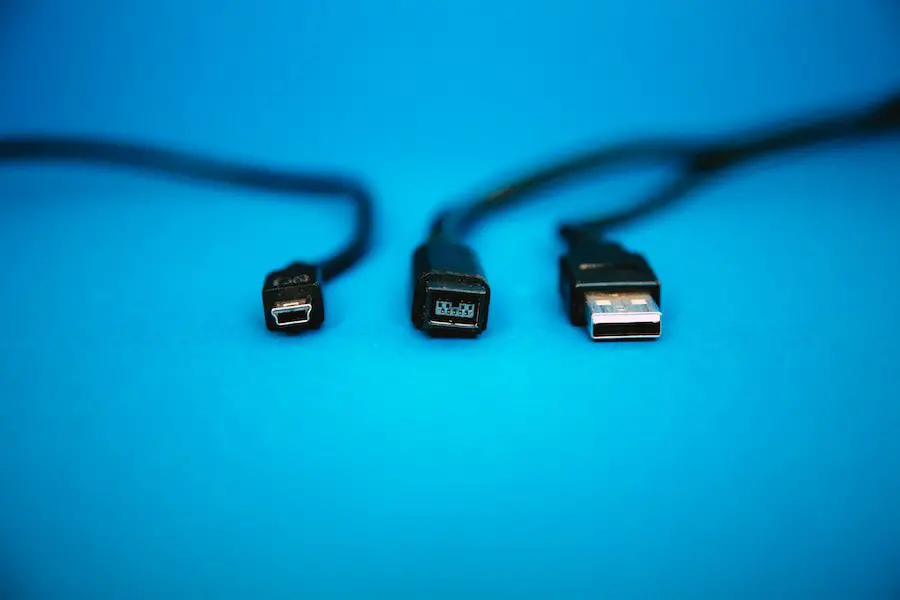Connecting a Firewire audio interface to a Mac is a common concern for music producers and audio engineers using older audio hardware with their modern Mac computers. Firewire interfaces were widely used for their high-speed data transfer capabilities. Still, Thunderbolt and USB-C have become more prevalent as technology has progressed, leaving many wondering how to continue using their legacy devices.
To connect a Firewire audio interface to a Mac, you must use a series of adapters and cables to communicate between the outdated Firewire connection and the newer Thunderbolt or USB-C ports found on current Mac computers.
This process can vary depending on the specific type of Firewire port on your audio interface and the available ports on your Mac. Nevertheless, using your Firewire audio interface with a Mac is possible and straightforward with the right adapters and an understanding of compatibility.
Table of Contents
- Understanding Firewire and Mac Compatibility
- Choosing the Right Firewire Adapter
- Connecting the Firewire Audio Interface
- Setting Up Your Mac for Audio Recording
- Troubleshooting Common Issues
- Conclusion

Understanding Firewire and Mac Compatibility
Firewire, or IEEE 1394, is a high-speed data transfer protocol commonly used for audio interfaces, digital video cameras, and other multimedia devices. It was initially released as Firewire 400 with a six-pin connector, allowing for data transfer at 100, 200, or 400 Mbps, depending on the cable. Firewire 800, a recent version, provides faster transfer rates and is backward compatible with Firewire 400 using the appropriate adapters.
Modern Mac computers, however, have transitioned to Thunderbolt and USB-C ports, which do not natively support Firewire connections. You will need at least two compatible adapters to connect a Firewire 400 or 800 device to a Mac with Thunderbolt 3 or USB-C ports. For a Firewire 800 device, you’ll first require a Firewire 800 (Thunderbolt 1/2) adapter and then a Thunderbolt 1/2 to Thunderbolt 3 (USB-C) adapter if your device supports Firewire 400 only, an additional Firewire 400 to 800 adapter is necessary before connecting it to the Thunderbolt adapters.
It is essential to ensure your adapters are compatible with your Mac and the Firewire device. Some Mac models may specifically require Apple-branded adapters for smooth operation. Also, note that while using multiple adapters for connections, the overall performance may be affected, making it essential to have the right combination of adapters and verify their suitability for your specific use case.
Choosing the Right Firewire Adapter
When connecting a Firewire audio interface to your Mac, it is crucial to choose the correct adapter to ensure compatibility and optimal performance. Modern Macs have Thunderbolt 3 or USB-C ports, making it necessary to use adapters to connect older Firewire devices.
First, identify the type of Firewire port on your audio interface. Firewire 400 and Firewire 800 are the two most common types. To connect a Firewire device to a Thunderbolt 3 or USB-C port, you will need two types of adapters:
- Firewire 800 adapter to Thunderbolt 1/2 adapter
- Thunderbolt 1/2 or USB-C to Thunderbolt 3 adapter
If your audio interface only supports Firewire 400, you need a Firewire 400 to 800 adapter. These adapters can be connected sequentially to create a single connection between the Firewire audio interface and your Mac’s Thunderbolt 3 or USB-C port.
Verifying that all adapters are compatible with your Mac before purchasing is essential, as some adapters may not work correctly. According to PreSonus, using approved Apple Thunderbolt to Firewire adapters is supported on Mac systems.
Connecting the Firewire Audio Interface
You must use an adapter or a specific cable to connect your Firewire audio interface to your Mac, as most modern Mac computers no longer have built-in Firewire ports. The type of adapter or cable will depend on the available ports on your Mac.
If your Mac has a USB-C or Thunderbolt 3 port, you can use a Firewire to USB-C connector to connect your Firewire audio interface and your Mac. This type of adapter can be found online. Some recommended options include the Thunderbolt to Firewire adapter from Apple.
You can use a Thunderbolt to Firewire adapter for Mac computers with Thunderbolt ports (pre-USB-C models). This will allow you to connect your Firewire audio interface directly to your Mac via the Thunderbolt port. A Thunderbolt connection ensures a fast and reliable connection between your Mac and the Firewire audio interface.
Once you have the appropriate adapter or cable, follow these steps to connect your Firewire audio interface to your Mac:
- Connect one end of the Firewire cable to the Firewire port on your audio interface.
- Connect the other end of the Firewire cable to the adapter, ensuring it is securely connected.
- Plug the adapter into the corresponding port on your Mac (USB-C, Thunderbolt 3, or Thunderbolt).
- Power on your Firewire audio interface and allow your Mac to detect the device automatically. You may need to install drivers or software, as required by the specific audio interface that you are using.
Once you have completed the connection, your Firewire audio interface should be connected to your Mac and ready to use in your preferred audio recording software.
Setting Up Your Mac for Audio Recording
Before you can begin using your Firewire audio interface with your Mac, ensure that your Mac is set up for audio recording. Follow these steps to configure your Mac for optimal audio recording.
First, connect your Firewire audio interface to your Mac using a compatible adapter, such as a Thunderbolt 3 to Thunderbolt 2 adapter. Once connected, your Mac should automatically detect the device.
Next, navigate to your Mac’s System Preferences. Click the Apple menu in the top left of your screen, then select “System Preferences” and “Sound.” In the Sound settings, go to the Output and Input tabs. Select your Firewire audio interface as the output device in the Output tab. In the Input tab, choose the same device as the input device. This ensures that your Mac receives audio input from your Firewire audio interface and outputs audio through the device.
You may want to optimize your Mac’s system settings for better audio recording and performance. To do this, turn off unnecessary background applications and notifications. This can help reduce latency and ensure smoother audio recording.
You might also need to grant microphone access to specific applications requiring audio interface access. Go to Apple menu > System Preferences > Privacy & Security > Microphone, and enable the setting for each application that requires access to the built-in mic, external USB mic, or inputs on your Firewire audio interface. After these adjustments, your Mac should be set up for optimal audio recording with your Firewire audio interface.
Troubleshooting Common Issues
You may encounter common issues when connecting a FireWire audio interface to your Mac. Below are a few troubleshooting steps to help resolve these problems:
1. Check the adapter: If you’re using a FireWire to USB or Thunderbolt adapter, ensure it’s compatible with your Mac and the audio interface. Some adapters don’t support certain devices or protocols. Refer to this video for guidance on connecting FireWire devices to M1/M2 Macs.
2. Update the drivers: Ensure that the latest drivers for your audio interface are installed on your Mac. Visit the manufacturer’s website for the latest updates and installation instructions.
3. Inspect the cables: Check for any physical damage or loose connections in the FireWire cables. Replace any faulty or damaged cables to ensure stable signal transmission.
4. Reset the audio interface: Power cycle your audio interface by unplugging it, waiting for a few seconds, and then plugging it back in. This can help resolve any minor issues or glitches.
5. Check system settings: Go to your Mac’s System Preferences and select Sound. Ensure that your audio interface is selected properly as the input and output device.
6. Test with different software: If you still have issues, try using different audio recording or editing software to isolate the problem. This can help determine if the issue is software-specific or related to the interface or Mac.
Conclusion
Connecting a Firewire audio interface to your Mac can be done using a Thunderbolt to Firewire adapter. This adapter will help bridge the connection between your Firewire device and your Mac’s Thunderbolt or USB-C port.
If your Firewire audio interface supports Firewire 400 or 800, you should be able to use the same adapter, as it is compatible with both types of Firewire connections. Make sure you have a compatible cable, such as Firewire 400 to Firewire 400 or Firewire 800 to Firewire 400, depending on your computer’s ports and the interface’s requirements.
Consult your audio interface’s manual and check if your Mac has the appropriate port and drivers to support your device. You can also visit the interface manufacturer’s website for software updates, compatibility information, or device-specific instructions.
Following these steps will ensure a successful connection between your Firewire audio interface and Mac, allowing you to achieve high-quality audio recording and playback.
- Review of the ALABS IRON MINI-WL: A Powerhouse Wireless Microphone - October 4, 2023
- What is a Saturator in Music Production: A Brief Explanation - May 11, 2023
- What Are Rotary DJ Mixers? An Overview - May 11, 2023
SoundStudiomagic.com is a participant in the Amazon Services LLC Associates Program, an affiliate advertising program designed to provide a means for sites to earn advertising fees by advertising and linking to Amazon.com. We also participate in other affiliate programs which compensate us for referring traffic.

